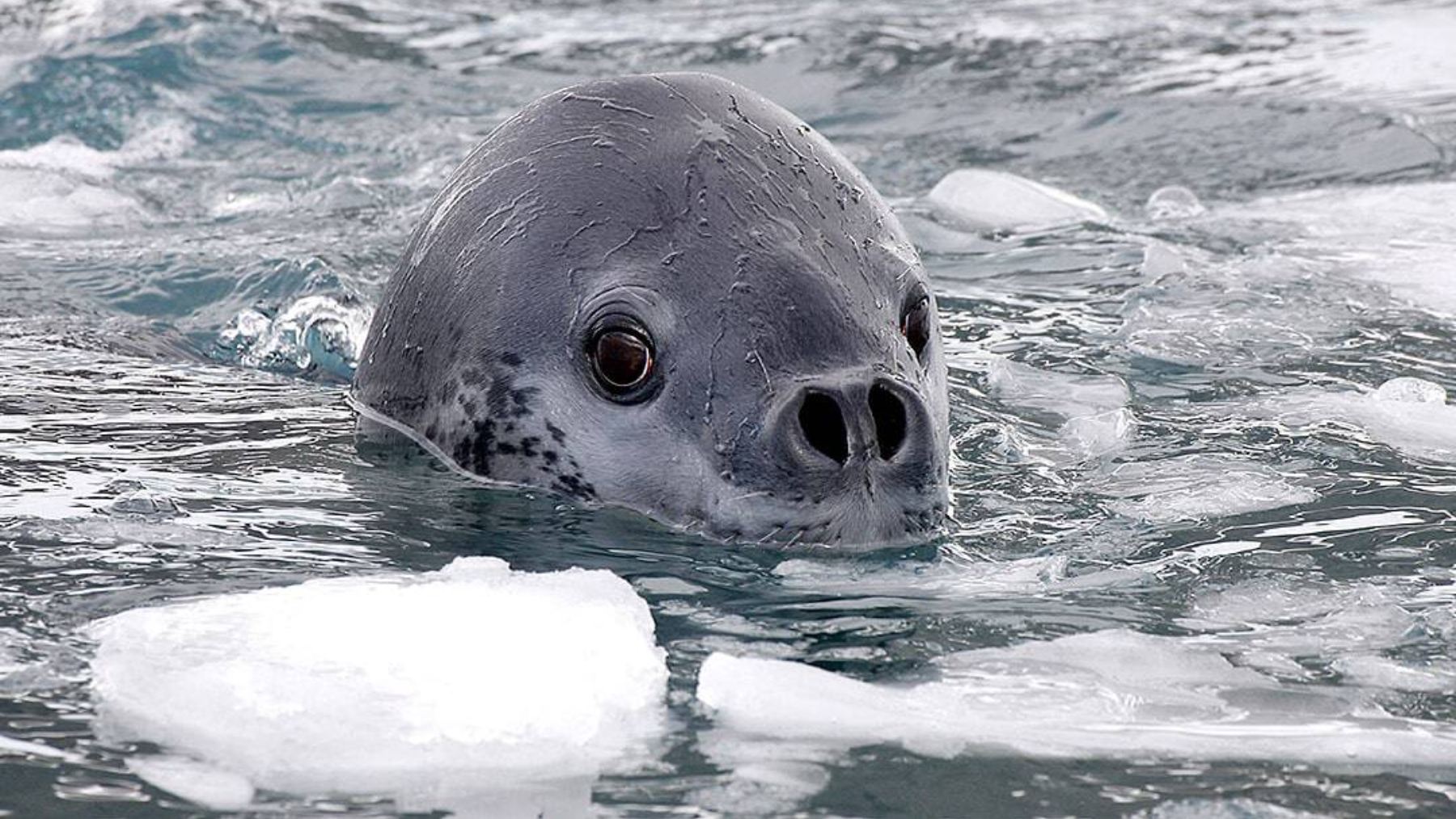Have you ever heard of leopard seals? They do something to attract females in Antarctica. In the cold and quiet waters of this place, there’s a sound that breaks this calmness and we are not talking about whales or dolphins, but leopard seals. They sing under the ice, can you believe that? But the most striking thing is that their songs follow a pattern similar to human child rhymes.
In the Antarctic summer, when the ice breaks and marine life is in open areas, male leopard seals become truly underwater singers. They can spend hours down there emitting powerful and repetitive sounds and do you know why they do it? To attract females and warn other males that that territory is already occupied. So, let’s learn more about these animals, shall we?
Musical leopard seals
Far from improvising, each male leopard seal uses a concrete repertoire:
- High-pitched double trills
- Mid-range trills
- Low, descending trills
- Low double trills
- A deep “hoot” followed by a trill
With just five building blocks, leopard seals can create thousands of combinations. The most interesting thing about it is that each male has his own unique order of sounds, it’s like a musical digital footprint that makes them stand out over the rest.
Science role
A study on Eastern Antarctica recorded 26 males and analyzed their singing with a math tool called information theory, which is useful for measuring how predictable a sequence is. The results of this study showed that leopard seals’ songs are less predictable than those of humpback whales, and more organized than dolphins’ whistles. Their level of organization is similar to those of children’s rhymes: simple, but well structured.
If you think this is just a coincidence, you are wrong. Keeping a specific order in a sound sequence allows females to identify a concrete male even km away, through ice and marine currents.
Singing to survive and win females’ heart
Leopard seals live very far away from each other, so it’s very difficult for them to see each other face to face. That’s why singing is the most efficient way to communicate without spending energy on long journeys.
Also, using clear and repetitive sounds underwater is an advantage because currents, ice and echoes can distort the message. It’s like if males used a simple code to make sure their love message is perfectly received.
Is it a musical language?
Well, leopard seals’ songs don’t have a literal meaning as ours, but they do follow sound rules. Knowing which sound was first helps them identify which will come after, so this indicates the sounds are not used randomly.
Let’s compare it to other underwater singing
Basically, leopard seals have the perfect balance between structure and variety, enough to be recognized and keep possible partners’ attention. But, let’s compare it to other animals:
- Humpback whales: their songs are more predictable and repetitive that are transmitted between groups.
- Dolphins: their sequences are more random, mostly when it comes to their identification whistles.
If we compare leopard seals’ songs with human music, they are less structured than the classics, but more organized than most of modern songs.
There’s still a mystery
We don’t know yet whether female leopard seals choose their partners just by the type of song or if males change their melody according to the competition. Another unknown aspect is how much time a male keeps his unique patter, although the study saw that they could last at least three days.
What’s clear is that in one of the most remote places on Earth, a well structured song can make the difference between being unnoticed or having descendants.
